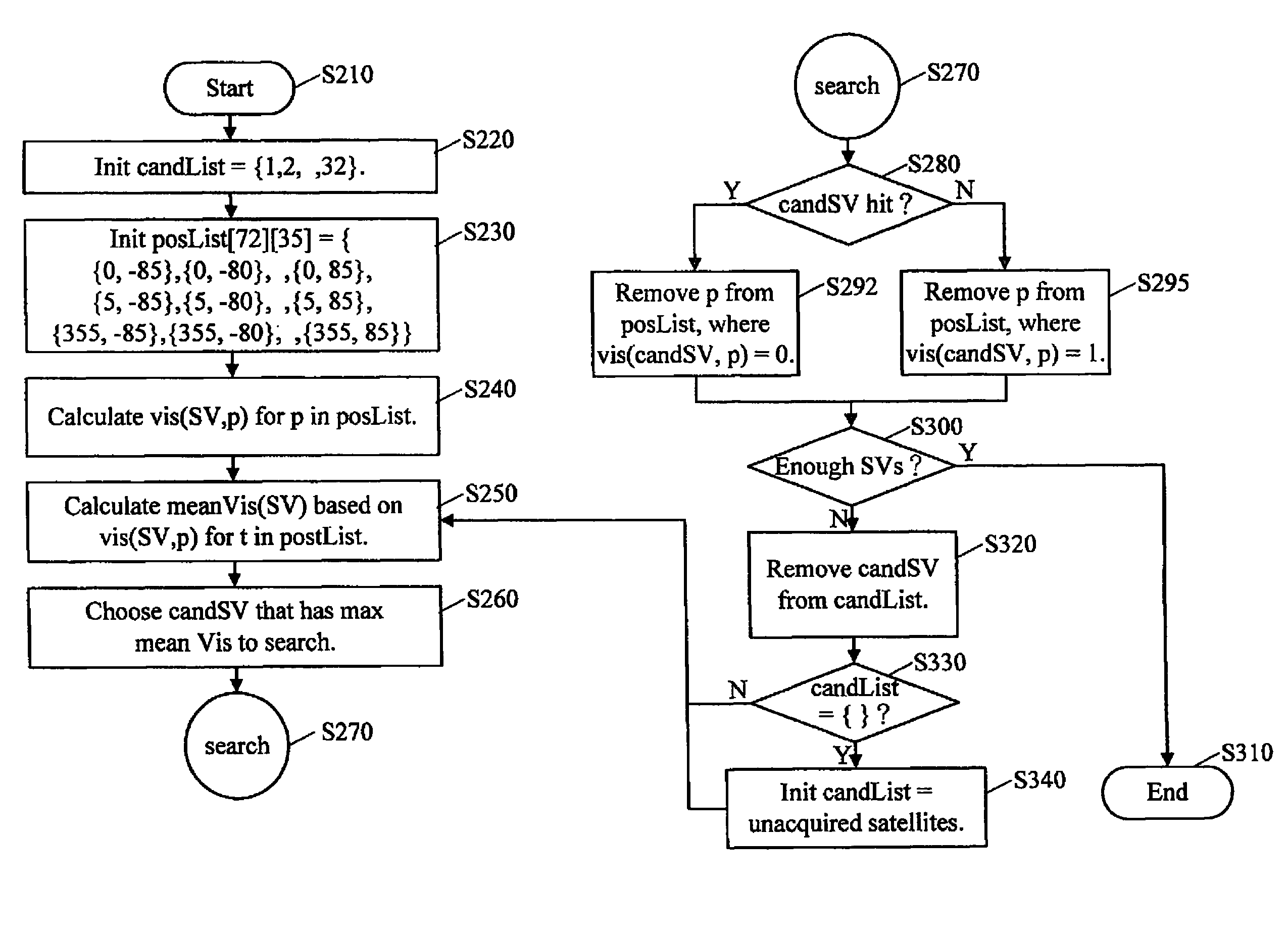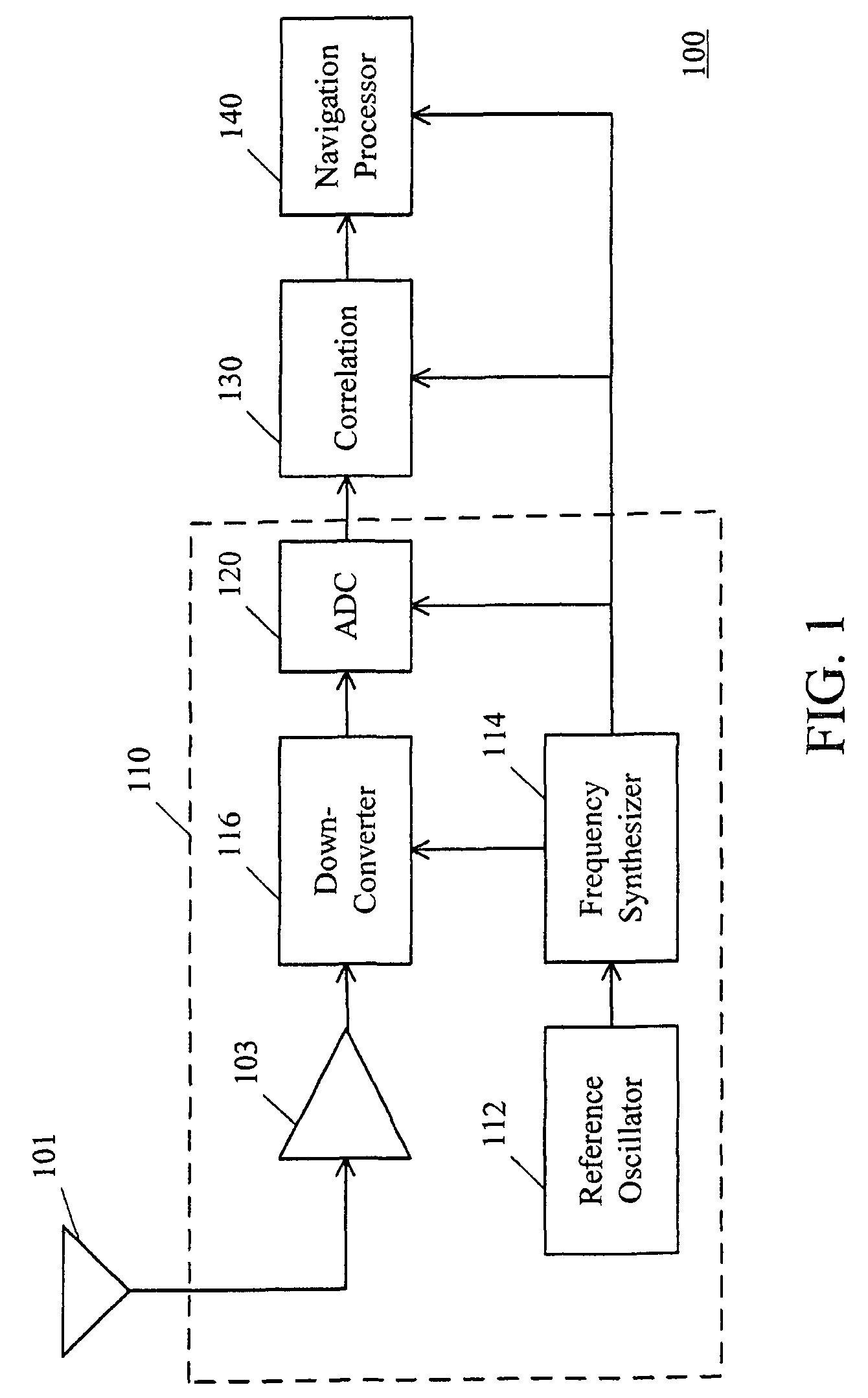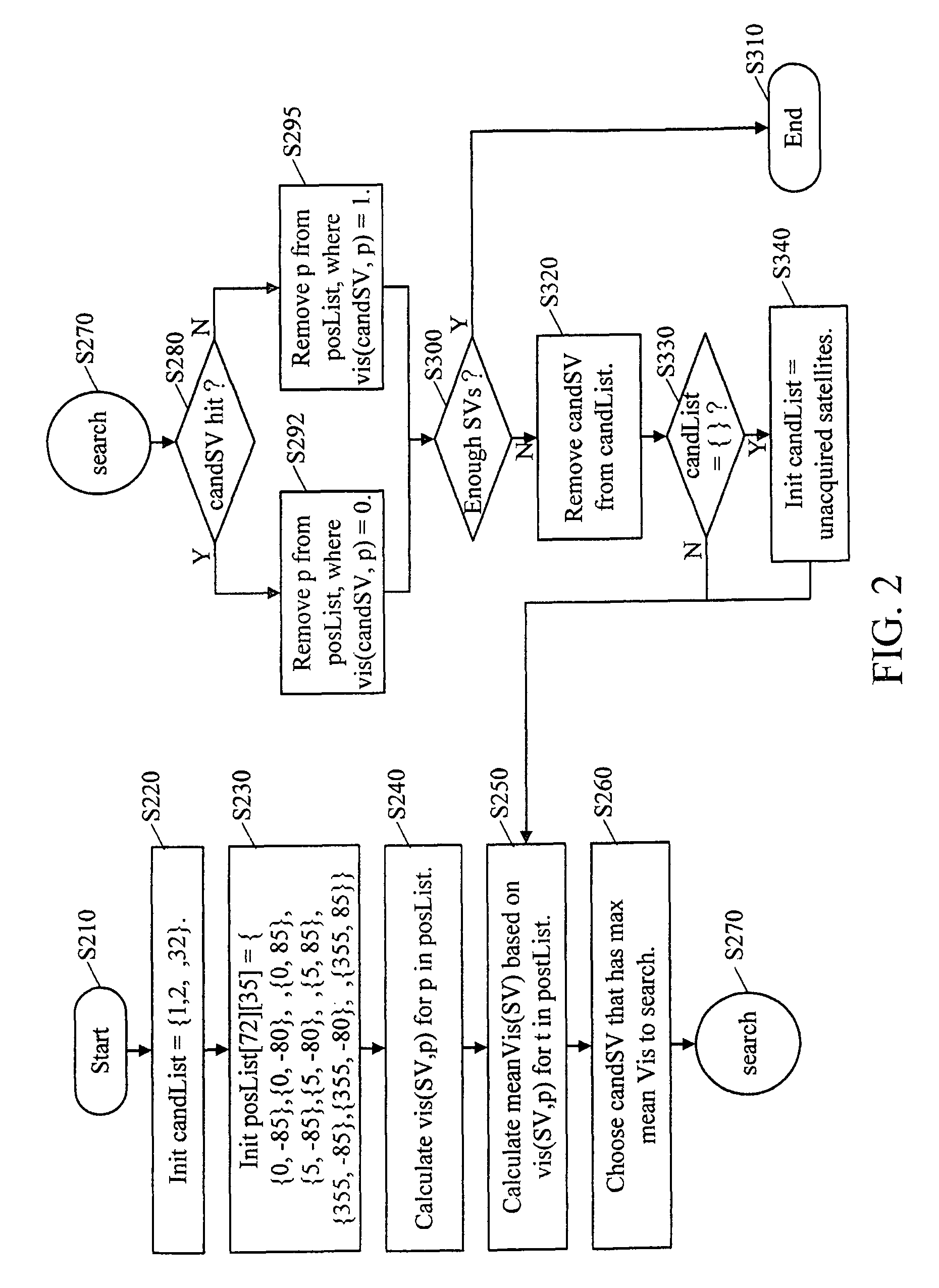Satellite search method and receiver using the same
a satellite search and receiver technology, applied in the field of satellite search, can solve the problems of taking a long period of time to acquire all visible satellites, how to search all satellites quickly becomes more and more challenging for a receiver, etc., and achieves the effect of efficient rapid reduction of satellite id uncertainty
- Summary
- Abstract
- Description
- Claims
- Application Information
AI Technical Summary
Benefits of technology
Problems solved by technology
Method used
Image
Examples
Embodiment Construction
[0019]When a receiver starts, the first task is to search all the visible satellites in the sky. Satellite visibility relates to a user's position, system time (e.g. GPS time) and satellite orbital information. The satellite orbital information is from data collected in the last fixing of the receiver or from a remote aiding data server. The receiver can determine the satellite visibility by checking an elevation angle of a satellite with respect to the receiver, for example. A specific satellite is deemed as visible when the elevation angle is greater than 5 degrees. Otherwise, this satellite is deemed as invisible. However, in addition to the elevation angle of the satellite with respect to the receiver's position, the visibility of each satellite can be determined by any other proper method. The satellite visibility can be expressed as a function of the user's position, the system time and the satellite orbit information. If the user's rough position, the rough time (e.g. time pr...
PUM
 Login to View More
Login to View More Abstract
Description
Claims
Application Information
 Login to View More
Login to View More - R&D
- Intellectual Property
- Life Sciences
- Materials
- Tech Scout
- Unparalleled Data Quality
- Higher Quality Content
- 60% Fewer Hallucinations
Browse by: Latest US Patents, China's latest patents, Technical Efficacy Thesaurus, Application Domain, Technology Topic, Popular Technical Reports.
© 2025 PatSnap. All rights reserved.Legal|Privacy policy|Modern Slavery Act Transparency Statement|Sitemap|About US| Contact US: help@patsnap.com



